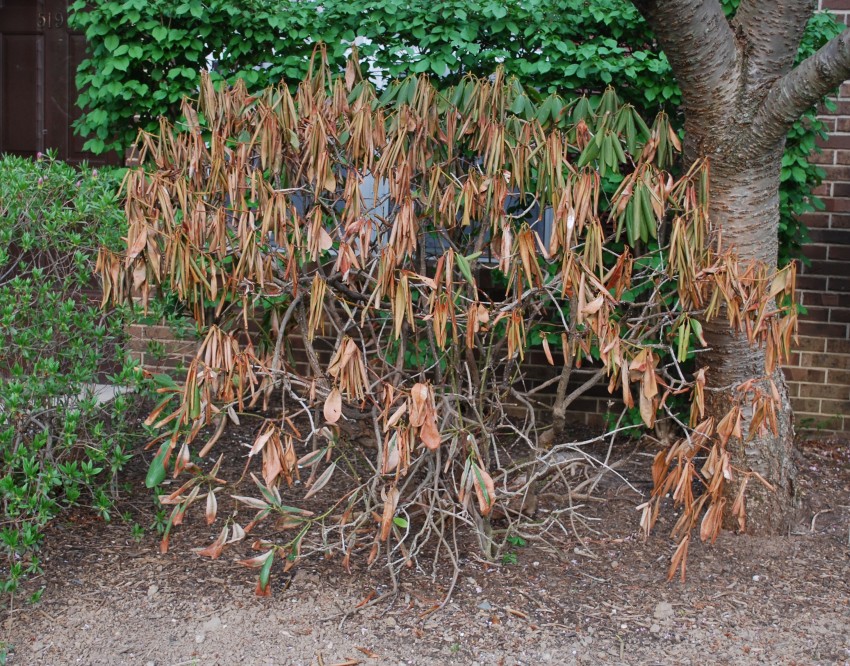Introduction
In late winter and early spring, foliar browning is common on many coniferous plants. Arbovitae, hemlock, juniper, pine, spruce, yew, boxwood, and rhododendron are especially prone to this type of winter injury. Foliar browning, or winter browning, can usually be attributed to the desiccation of plant foliage. In winter, plant foliage undergoes a process called transpiration, in which moisture is converted into vapor, and released into the atmosphere through the pores on needles and leaves. Winter temperatures cause plant roots to freeze, preventing them from absorbing the water required to replenish the moisture lost through transpiration.
Fluctuations in temperature, heavy winds, and abundant sunlight can exacerbate winter browning. Winter browning is usually more pronounced on the southern and western exposures of trees. On some tree species, injured foliage may appear red, yellow, or gray. On blue spruce, affected foliage turns purple.
What Causes Winter Browning?
Winter browning is caused by several climatic factors, which combine to induce foliar damage. Warm periods in winter, coupled with heavy winds and persistent sunlight, hasten the loss of moisture through transpiration. The frozen plant roots are unable to replenish the moisture, resulting in foliar dessication. Desiccated foliage often dies back. Trees that are young or small in stature tend to lack extensive root systems. This renders them more susceptible to winter browning.
Snow accumulation influences how much of a tree’s crown may incur winter browning. Foliage that is located beneath the snow-line will be insulated from the sun and wind. Often, heavy snow accumulations will prevent the lower branches of trees from becoming desiccated, allowing them to remain green. If no snow has accumulated, the sun may warm the parts of the tree closest to the ground, causing extensive desiccation throughout the crown. Damage to the foliage is intensified by warm temperatures. The abundance of sunlight stimulates the foliage to break dormancy, and resume photosynthesis. As cold temperatures prevail, and the active foliage is subjected to freezing conditions, the cellular tissues rupture, and are killed. Eventually, the damaged foliage dies back, and is shed from the tree.
Effects on Conifers
Winter browning weakens trees, sapping them of their energy. Damaged foliage is usually shed from trees in summer, with bare patches forming throughout the crown. But while foliage may be impacted by the harsh winter conditions, healthy buds are seldom affected. Trees with healthy buds will often recover from the loss of foliage. The existing buds will awaken in spring, and produce a new flush of growth. Vigorous trees will recover their foliage within one to two years.
Management
- Ensure that trees are sufficiently watered throughout the growing season. During warm periods in winter, the soil area of susceptible trees can be drenched to encourage water absorption, and stave off winter injury.
- Apply a layer of organic mulch around the base of trees in fall, or during warm periods in winter, to improve soil quality, moderate soil temperature, and conserve soil moisture.
- Remove dead or weakened branches from trees to improve plant vigor.
- Anti-desiccants can be applied to the foliage of conifers in late Fall and early February. Anti-desiccants seal the pores on plant foliage, reducing the amount of moisture lost through transpiration.
Photo courtesy of Richard Buckley, Rutgers PDL.


